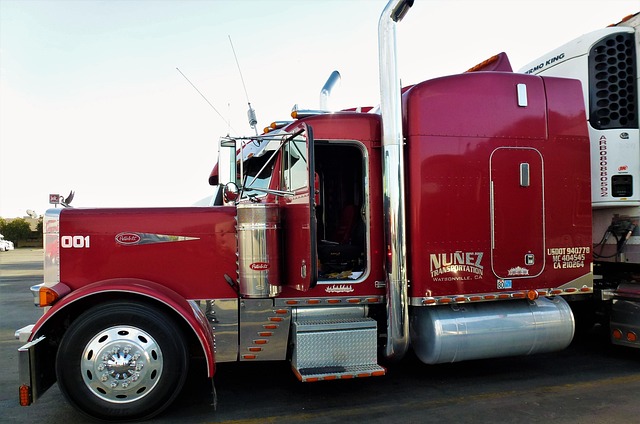Looking to register your car in California? This comprehensive guide breaks down the process step-by-step. From understanding essential requirements to gathering all necessary documents, this article ensures a smooth experience. Learn about the critical role of DMV VIN verification and master the application process effortlessly. Discover how to pay fees and obtain your license plate without hassle. Streamline car registration in California with these clear instructions.
- Understand California Vehicle Registration Requirements
- Gather Necessary Documents for Car Registration
- Visit Your Local DMV for VIN Verification
- Complete the Registration Application Process
- Pay the Required Fees and Obtain Your License Plate
Understand California Vehicle Registration Requirements

Before registering your car in California, it’s crucial to understand the state’s specific requirements for vehicle registration. The California Department of Motor Vehicles (DMV) mandates that all vehicles operated within the state be properly registered and bear a valid California license plate. This process involves more than just submitting the necessary paperwork; it also requires verifying the Vehicle Identification Number (VIN) to ensure the car’s authenticity and history.
One key step in the registration process is the DMV VIN verification, which checks the vehicle’s details against national databases. This can be done either online through a trusted mobile vin verifier or in person at a local DMV office. The VIN inspection ensures that the car matches its reported specifications and hasn’t been reported as stolen or had previous damage that might affect safety or value. This is a vital step to ensure compliance with California’s vehicle registration regulations, protecting both you and the state against potential fraud or unauthorized activities.
Gather Necessary Documents for Car Registration

Before heading to the DMV for car registration, ensure you have all the necessary documents. This process can be streamlined by having a complete set of papers ready. Among them, the Vehicle Identification Number (VIN) verification is crucial. A mobile vin verifier or even a simple vin inspection at home using online tools can help you confirm the vehicle’s history and authenticity. With this information, you’ll save time and effort during the registration process.
Additionally, gather your proof of ownership, often in the form of a title document, as well as any required insurance papers. A valid driver’s license is also essential. By having these documents readily available, you can quickly and efficiently complete the car registration process at the DMV, ensuring a smoother experience.
Visit Your Local DMV for VIN Verification

Before you can register your car in California, you’ll need to undergo a critical step: DMV VIN verification. This process involves taking your vehicle to your local Department of Motor Vehicles (DMV) office for inspection. The DMV will verify the Vehicle Identification Number (VIN) to ensure it matches the information on record and that the vehicle meets all safety standards. It’s essential to have accurate documentation, including proof of ownership and insurance, to streamline this process.
In some cases, you might opt for a mobile vin verification or vin inspection service, which offers convenience by bringing the inspection to your location. This is particularly beneficial if you have a busy schedule or face challenges transporting your vehicle to the DMV. The process remains similar, with the inspector cross-referencing the VIN against state records and ensuring compliance with safety regulations.
Complete the Registration Application Process

After gathering your necessary documents, it’s time to complete the registration application process at a California DMV office or online, depending on your preference. If you opt for in-person submission, visit a local DMV and present all required paperwork, including proof of ownership, vehicle identification number (VIN) verification, and any applicable fees. A DMV agent will review your documents and perform a VIN inspection to ensure the vehicle’s identity matches the registration details.
For added convenience, consider using mobile VIN verification services that can provide instant results. These services allow you to receive a digital confirmation of your vehicle’s history directly from manufacturers or authorized dealers, eliminating the need for an in-person visit. This approach is especially useful if you have all your documents ready but are unable to visit a DMV office during regular business hours.
Pay the Required Fees and Obtain Your License Plate

After completing your vehicle’s purchase, the next step in registering your car in California involves paying the required fees and obtaining your license plate. This process typically starts with a DMV (Department of Motor Vehicles) vin verification, which ensures that your vehicle meets all safety standards. You’ll need to present proof of identity, ownership, and insurance during this process.
The fee for registration varies based on your vehicle’s type and age. Once verified, you can proceed with the license plate application. Consider convenient options like scheduling a mobile vin inspection or using an online service for a smoother experience. This step is crucial to ensure your vehicle’s legality on California roads and to avoid any future issues.
Registering a car in California involves understanding the state’s specific requirements, gathering essential documents, and completing a straightforward application process. After confirming your vehicle’s unique identification number (VIN) through a dmv vin verification, you’ll be on your way to securing the necessary paperwork and license plates. By following these steps and ensuring all documentation is accurate, you can efficiently complete the car registration process in California.



